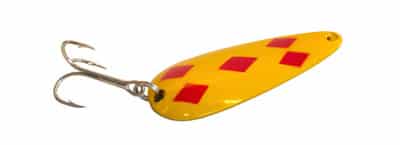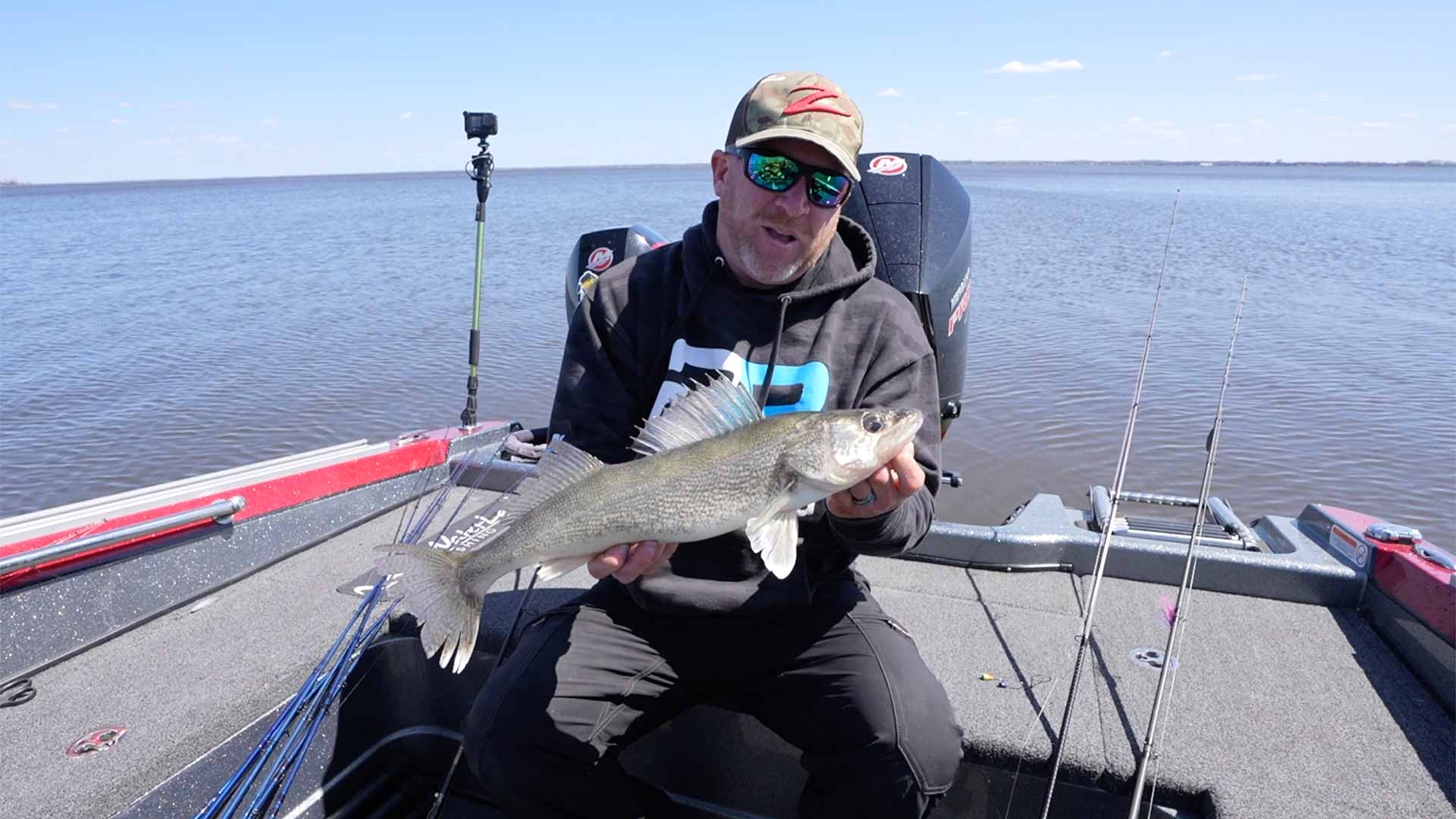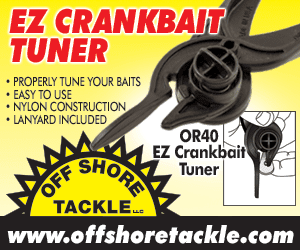With water temperatures in the high 50Fs or low 60 Fs throughout the Upper Midwest, northern pike are on the chew, feeding actively atop shallow weed flats. It’s one of the best times of year to get ’em. Big ones, too!
In natural lakes, developing weed flats adjacent to marshy spawning bays are the first places to look. Big pike have likely dispersed to nearby main-lake coontail or cabbage weeds, which are only a few feet high at this time of year, seldom rising much more than halfway to the surface. There’s plenty of open space above them to fish a variety of lures; even lures with treble hooks, since snagging weed tops isn’t much of a problem unless you select a lure that runs too deep–like a deep-diving crankbait.

Large (5- to 6-inch, give or take a bit), shallow- to mid-depth runners are fine, cast or trolled. So are large, bass-sized spinnerbaits, like 1/2-ounce tandems. You don’t need to supersize up to muskie baits this early in the season. The biggest pike tend to respond best to baits of modest proportions.
For casting cranks, use fairly steady, moderate-speed retrieves, interspersed with the occasional pump-and-pause to help trigger following fish. The water’s still a bit cool for fast-snapping, dash-and-dart lure motions, so don’t overdo it on most days.
For spinnerbaits, predominantly use steady swims, with the occasional pause-and-flutter, allowing your bait to tumble down into visible holes in weedbeds, or down along inside or outside weed edges.

Both cranks and spinnerbaits are easily long-line trolled at this time of year. By their basic nature, spinnerbaits will ride higher, nearer the surface, while lipped crankbaits will dive. You don’t need to “bulge” the surface with spinnerbaits, nor scratch weed tops with cranks more than occasionally. Clean, mid-depth trolling runs should be sufficient, particularly on cloudy or windy days when pike typically are most active. Once you locate areas with active pike, you can always stop to cast them with similar lures, and fine-tune your tactics as needed.
As a third option, try tossing a mid-sized (3 1/2– to 4 1/2-inch) wobbling spoon, like a Dardevle, Len Thompson #2 or #4, or a #3 Blue Fox Strobe. These are classic, popular lures for pike fishing in Canadian waters, but it seems that most American anglers just stash them deep in the tackle box once they return south of the border to their home waters. Midwestern pike actually see very little of their flashing, wobbling action, even in heavily fished waters. You can’t go wrong with a yellow-orange, Five-of-Diamonds pattern, slowly retrieved with occasional pauses and flutters. In fact, you just might be surprised.

Angler instinct draws many pike anglers to the deep, outside weed edge at this time of year, which can admittedly be very good for big pike. Most fishermen would be astonished, however, how shallow some of these big gators can be at these comfortable water temperatures. Depending on the day, 8 or 9 feet might be the productive depth–or 5 to 7–and even shallower. Mostly, it depends on the depth and thickness of the best weedgrowth; the presence of baitfish; and the activity level of the pike, which is often based on wind and sunlight conditions. Or, simply on the freaky nature of big pike, which can go anywhere they want, whenever they want, until the water temperatures rise much above 70 F, sending them retreating to deeper, cooler water for the summer months.










